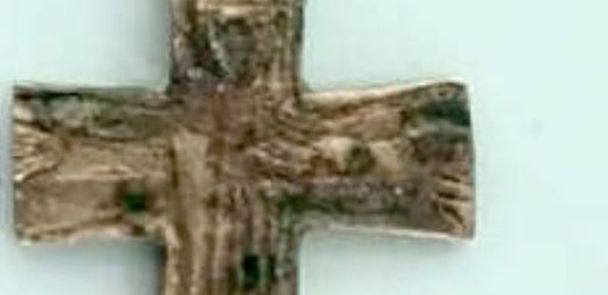10th Century with Jesus Christ image, peacock ring seal found in Tudia fortress in Bulgaria’s sliven
Archaeological excavations of the Late Roman, Early Byzantine and medieval Bulgarian fortress of Tuida in the city of Sliven. Found one of the most notable objects found during 2019 is the cross with an Image of Jesus Christ of the tenth century, during Bulgaria’s First Empire (632/680 – 1018), and a medieval ring seal with a peacock image.

Tuida, now increasingly gaining popularity as a cultural tourism venue, was originally an Ancient Thracian settlement that grew into a Late Roman, Early Byzantine, and medieval Bulgarian fortress.
The Roman fortress itself was built after the capital of the Roman Empire was moved from Rome to Constantinople in 325 AD.
Among other things, the Tuida Fortress in the city of Sliven in Southeast Bulgaria is remarkable for having a well-preserved secret passage leading outside the stronghold to a nearby river, which was erected in the 6th century AD.
The 2019 archaeological excavations of the Tuida Fortress were conducted for a period of 20 days in the middle of the fall, and led to the discovery of a total of 103 archaeological artifacts, Nikolay Sirakov, Director of the Dr. Simeon Tabakov Regional Museum of History in Sliven has announced at a news conference.

The archaeological team of the Sliven Regional Museum of History has excavated a spot in the northern part of the Tuida Fortress, unearthing and researching part of a well-preserved home from the 9th – 10th century, a medieval water pipeline, and a total of nine medieval pits, which were part of the said home, Sirakov reveals, as cited by BTA.
The small 10th century cross with a depiction of Jesus Christ discovered in the latest digs in the Tuida Fortress in Sliven is made of bronze.


In addition to the Christian artifacts, the Bulgarian archaeologists have also found a large number of medieval coins and bone artifacts in the latest digs in the Tuida Fortress in Sliven.
The latter finds are seen as a demonstration that bone processing and crafting were among the medieval crafts that were well-developed in the Tuida Fortress.
In addition to the excavations in Tuida, whose partly restored ruins overlook the modern-day city of Sliven, in 2019, the archaeologists from the city’s Regional Museum of History participated in two other exploration projects.
One has been performing rescue archaeological excavations in the town of Zornitsa, Haskovo District, along the route of the natural gas pipeline connecting Bulgaria and Greece (the “Stara Zagora – Komotini” natural gas pipeline, also known as Interconnector Bulgaria – Greece (IBG).
There the archaeologists found a number of artifacts from various time periods dating back as early as the prehistory, including loom weights, fishing tackles, a mold for ceramic lamps, iron arrow tips, and various types of bronze and silver coins.
The most notable artifact found in the digs near Zornitsa led by archaeologist Veselin Ignatov, however, is said to be the bronze umbo (shield boss) of a parade shield.
